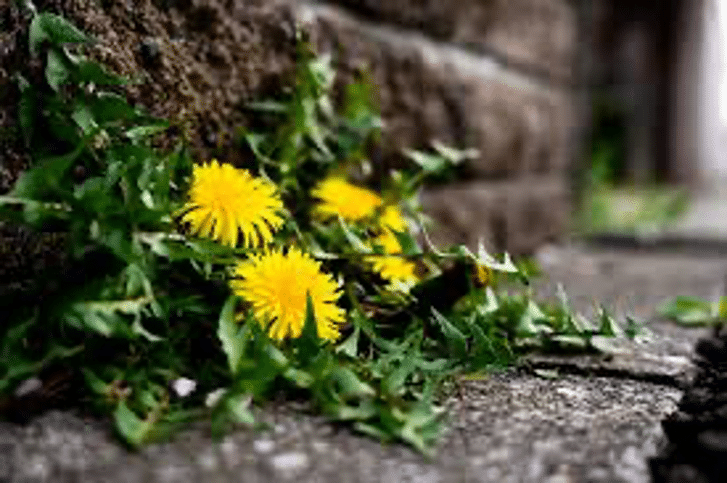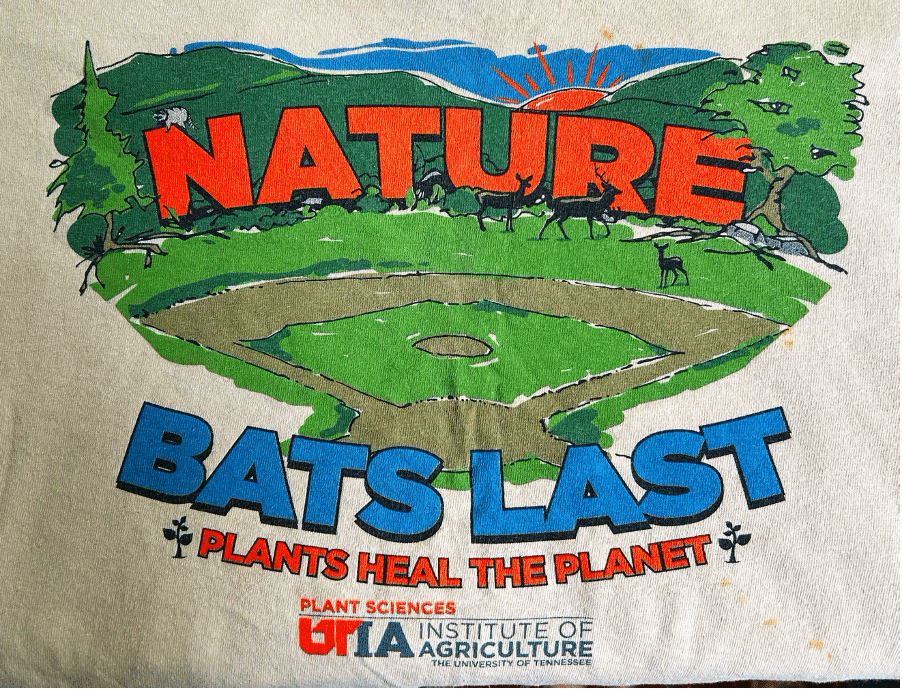An homage to the urban weed

What, exactly, is a weed?
At a recent talk I gave on Earth Day, I had a middle school girl ask me “What is a weed?’ as I was going on one of my rants about how every lawn should have at least a little bit of clover. (I also fantasize about one day sneaking onto the Master’s Course at Augusta and dropping, Shawkshank Redemption-style, pockets of wildflower and clover seed all over the fairways). Eager to get on to more soapbox spouting, I gave my usual flippant answer to her question. “A weed is any plant in the wrong place.”
For those lucky enough to follow me (I wish Word would insert the winking emoji as easily as my phone does), you know that most of my writings have me telling you where to plant something or me explaining the basics of garden design. Today’s post isn’t so much a “how to” but merely a Seinfeld-like observation. Today’s topic is my amazement at how resilient and tenacious nature can be.
Occasionally, when I’m not out seeking out a new local craft brew in our beautiful downtown (Knoxville, TN), I allow my eyes to wander upward and I sometimes spy a small bit of vegetation (or even a tree sapling) sprouting from a tiny crack in an old building’s mortar. “Good for you!” I say mostly to myself. “Give it all you got!” Who of us hasn’t witnessed a dandelion valiantly aiming its yellow hair toward the sun as it takes hold in a crack in a sidewalk? The same goes for the beautiful blue chicory flower or goldenrod.

What most see as a problem is really just a very small horticultural gift.
There are those who would argue that most urban vegetation should be nuked if it isn’t located in a park, container, or tree well (the latter should be redefined as “tree coffin” but I’ll save that for another writing). But think about it. These “weeds” are doing no less of a job producing oxygen and sequestering carbon than any other plant. Mini habitats are also formed when an abandoned parcel is allowed to go a little rogue. I love the story / urban legend of renegade guerilla gardeners tossing water balloons filled with wildflower seeds onto vacant city lots to bring a little rough beauty where there would otherwise be little.
Many years ago, I read a wonderful book entitled A Tree Grow in Brooklyn by Betty Smith https://www.amazon.com/Grows-Brooklyn-Anniversary-Perennial-Classics/dp/0060736267 The tree that the main character admires, plays a minor part but native plant lovers cringe when it is revealed that the tree is none other than Tree of Heaven (Alanthus altissima). Anyone who knows of this tree can attest that it is far from heavenly and it’s seeds are in the zillions making it a real challenge to other vegetation once it takes hold. But my point is that it is a green, living thing and possibly holds a bird’s nest or two.
Sure, we should do everything we can to stem the spread of invasive exotic plants (Bradford pear, anyone?) but if a plant isn’t truly a threat perhaps, we could tread more lightly where “spontaneous vegetation” is concerned.

I’m not sure where this is but I love the recognition!
I once designed a T-shirt for our Plant Sciences Club before I retired from The University of Tennessee. The message was simple but I wanted to get the point across that no matter what humans do to our fragile planet; nature will still be doing her thing long after we’re gone. Three cheers for green stuff!

T-shirt I designed for our Plant Sciences students.
Till next time,
NATURE BATS LAST!
Please share and subscribe! https://ahomeforyourgnome.com/
One last note. I love writing these but I honestly don’t know if ANYONE reads them. Feel free to contact me by responding to the notice you got about this writing or email me at menendez@utk.edu
I’d love to hear from you! Thanks!

